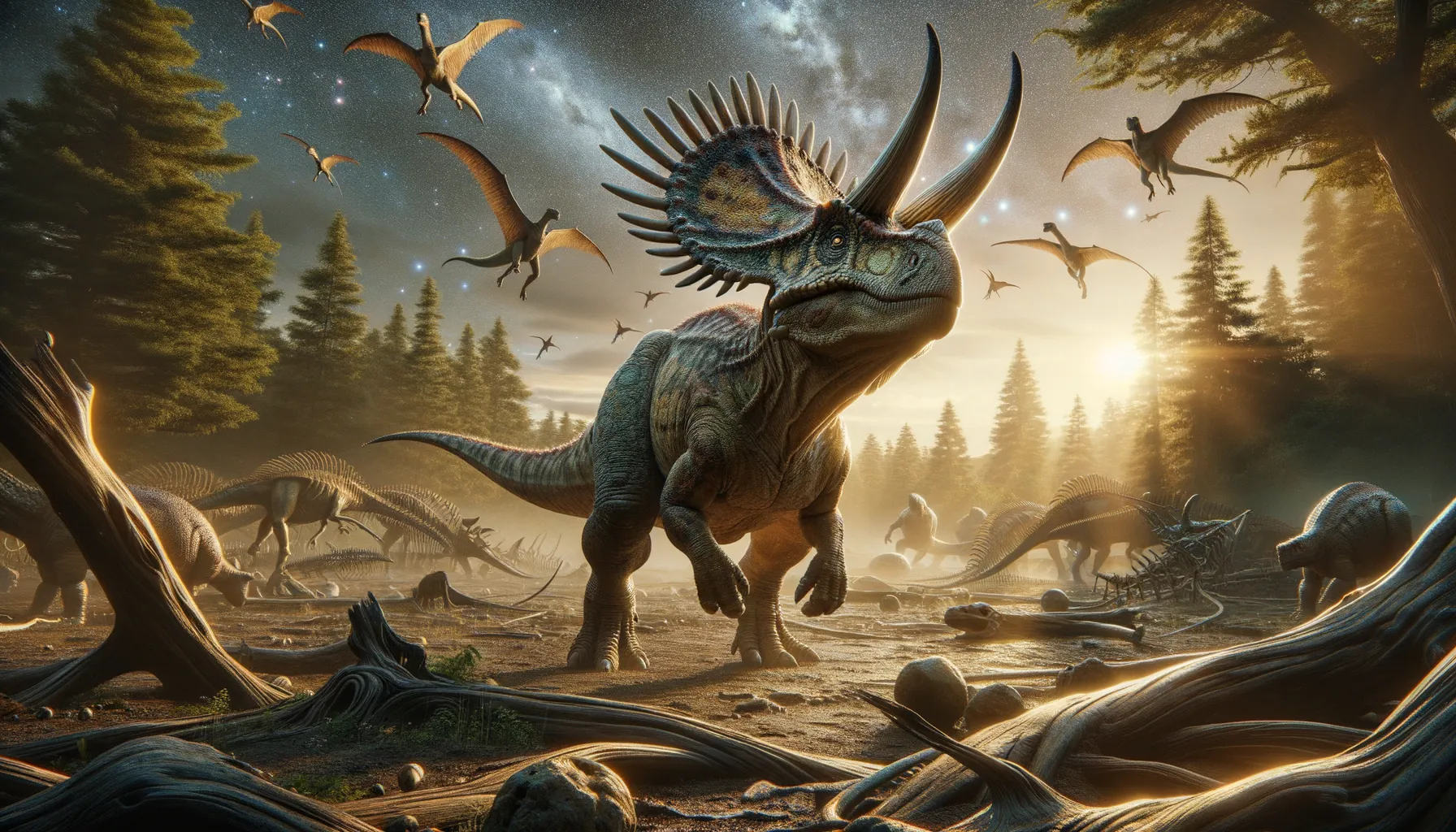
Koreaceratops
Horned wonder of ancient Korea.
Period
Cretaceous
Length
Roughly 2 to 3 meters in length.
Height
Approximately 0.6 meters at the hips.
Weight
Estimated at around 50 to 100 kilograms.
Koreaceratops is a unique horned dinosaur from the Late Cretaceous period, hailing from what is now modern-day South Korea. This dinosaur features a distinctive combination of traits seen in both primitive and advanced ceratopsians. It adds important information to our understanding of dinosaur evolution in Asia. Its fossil record offers invaluable insights into the migration patterns and diversity of horned dinosaurs prior to the mass extinction event.
Diet
Koreaceratops was likely herbivorous, feeding on a diet consisting of ferns, cycads, and other low-lying vegetation. Its beak-like mouth was well-adapted for cropping plants close to the ground.
Hunting
As a herbivore, Koreaceratops did not hunt other animals. It would have primarily foraged for plant material in its environment using its efficient beak.
Environmental challenges
Living during the Late Cretaceous, Koreaceratops faced changing climates and shifting floral compositions. It had to compete for food sources with other herbivores and avoid predators. Occasional natural disasters like floods could have also impacted its habitat and food availability.
Speed
Likely slow due to its size and limb structure.
Lifespan
Estimated to be around 10 to 20 years.
First discovery
Discovered in South Korea in 2008.
Fun Facts
- Koreaceratops is a small herbivorous dinosaur discovered in South Korea, so its name fittingly means 'Korean horned face'.
- This dinosaur lived during the Late Cretaceous period, around 103 to 100 million years ago.
- Unlike its horned relatives, Koreaceratops had a unique tail shape that might have helped it swim.
- It was discovered in 2008, and it provides important insight into the evolution of ceratopsians, the group of dinosaurs that includes Triceratops.
- Koreaceratops was relatively small, estimated to be about as long as a modern car, around 2.5 meters or 8 feet.
- Its discovery marked the first ceratopsian dinosaur found in South Korea, expanding the known range of horned dinosaurs in Asia.
Growth and Development
Koreaceratops likely hatched from eggs, growing rapidly during its early years to achieve a size that offered some protection from predators. Its growth would have been influenced by the availability of resources and environmental conditions. Like other dinosaurs, it may have experienced different growth rates depending on the seasons and food abundance.
Habitat
Koreaceratops inhabited regions that are now part of modern-day South Korea, likely living in coastal plains or riverine areas. These habitats would have provided ample vegetation for feeding. The environment was shared with other species, both herbivores and carnivores.
Interaction with other species
Koreaceratops interacted with various other dinosaurs and animals in its ecosystem. Its social behavior remains mostly speculative, but it may have lived in small, family groups or been more solitary. Competing with other herbivores for food was a significant aspect of its daily life.
Natural lifespan
It likely lived for 10 to 20 years in the wild.
Reproduction
Koreaceratops would have laid eggs, with parental care remaining uncertain but possible based on parallels with similar species. Nests were likely built in secure sites to protect the young from predators. Eggs were incubated in natural conditions until hatched.
Social behaviour
Whether Koreaceratops was social or solitary is unclear, but it might have displayed herding behavior for protection. Social interactions could include vocal communications or display behaviors using its crest. Competition with others for resources was part of its social dynamics.
Fossil locations
Fossils of Koreaceratops have been primarily found in South Korea, adding to the understanding of Cretaceous fauna in Asia. These discoveries help clarify the diversity and distribution of early ceratopsian dinosaurs in this region.
